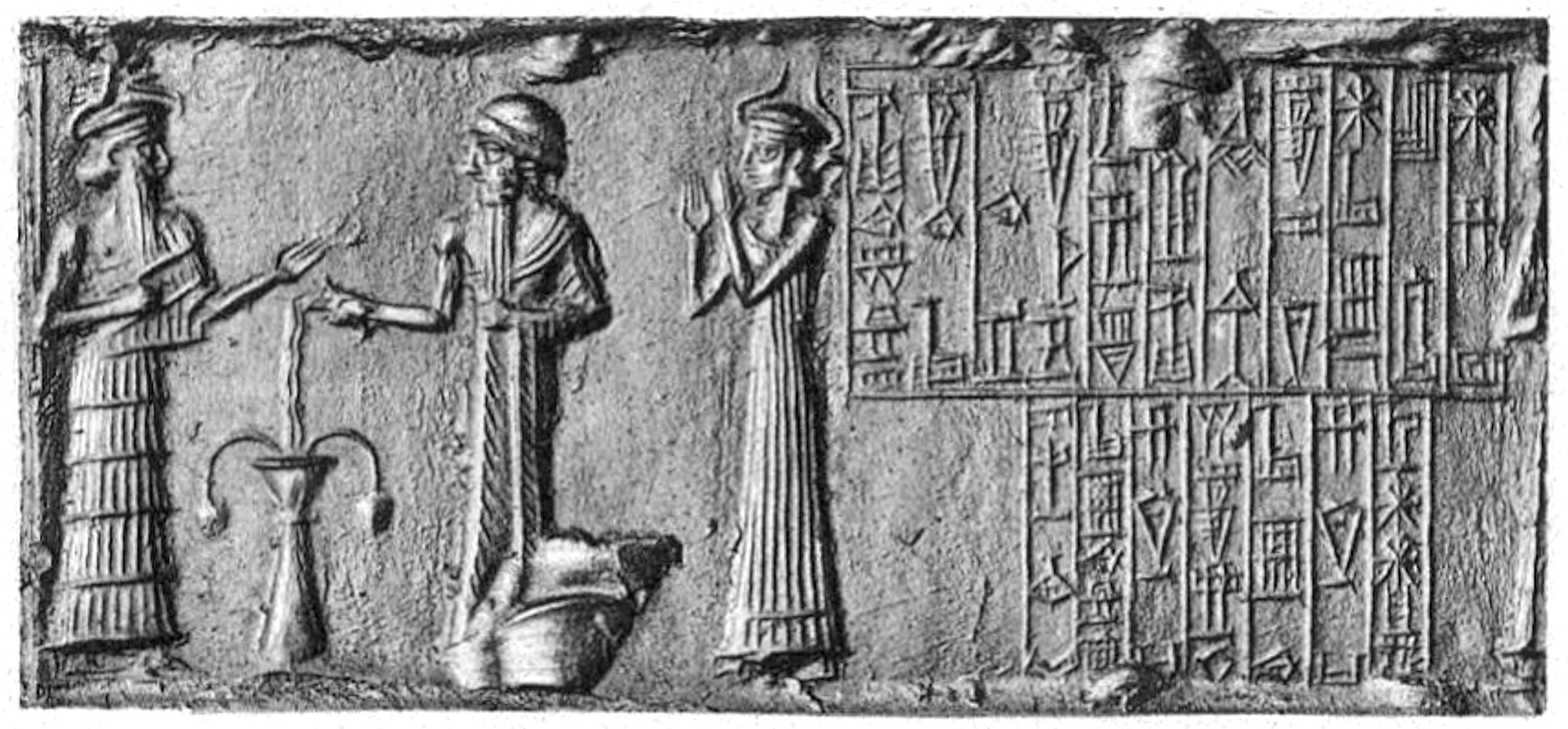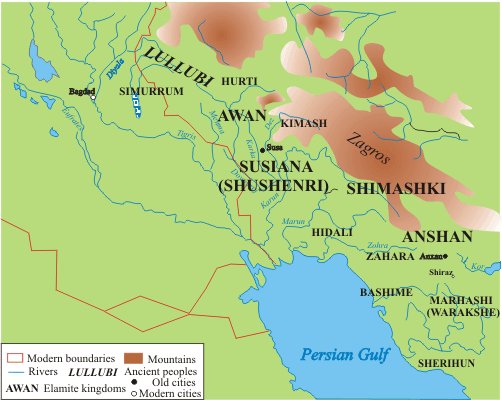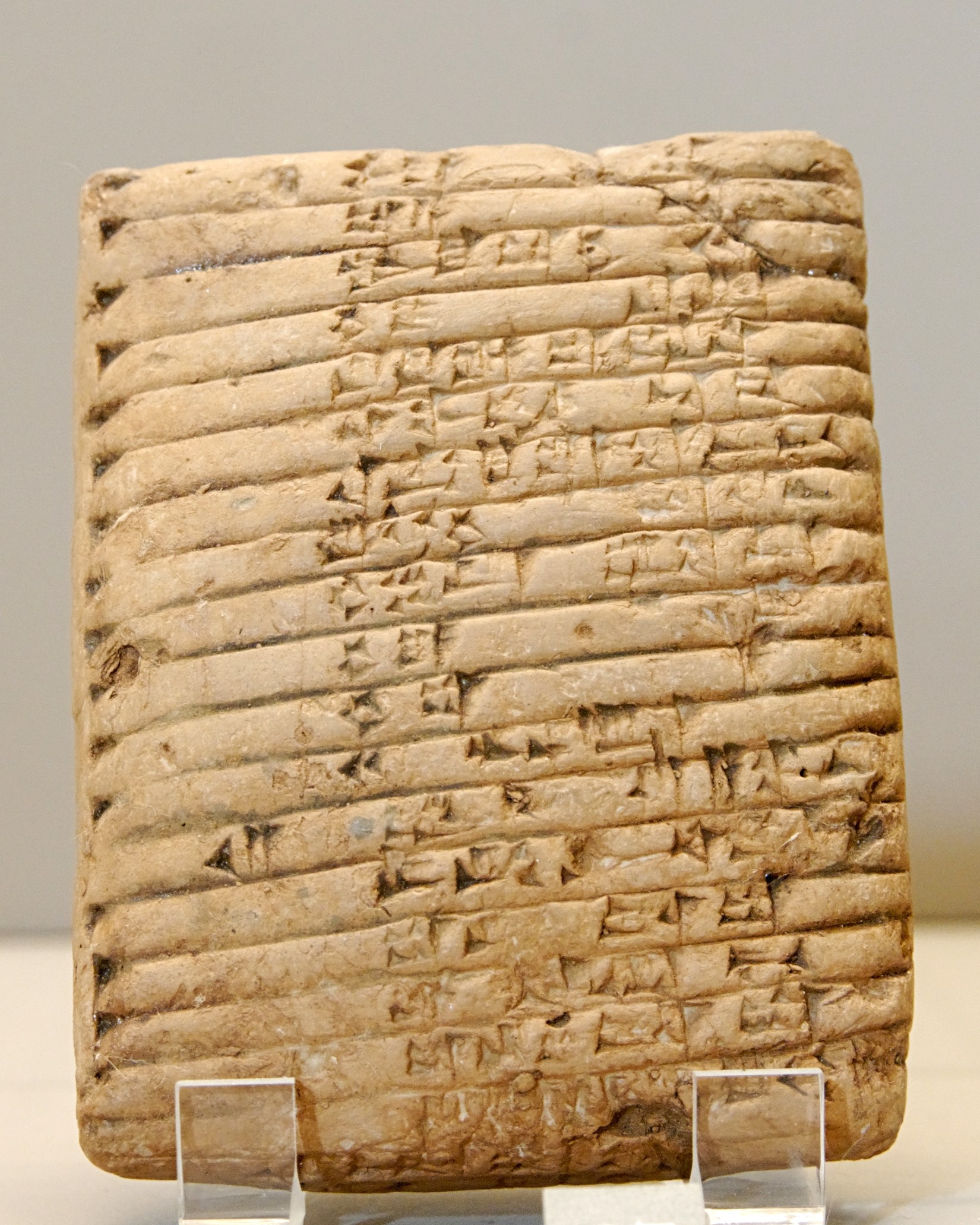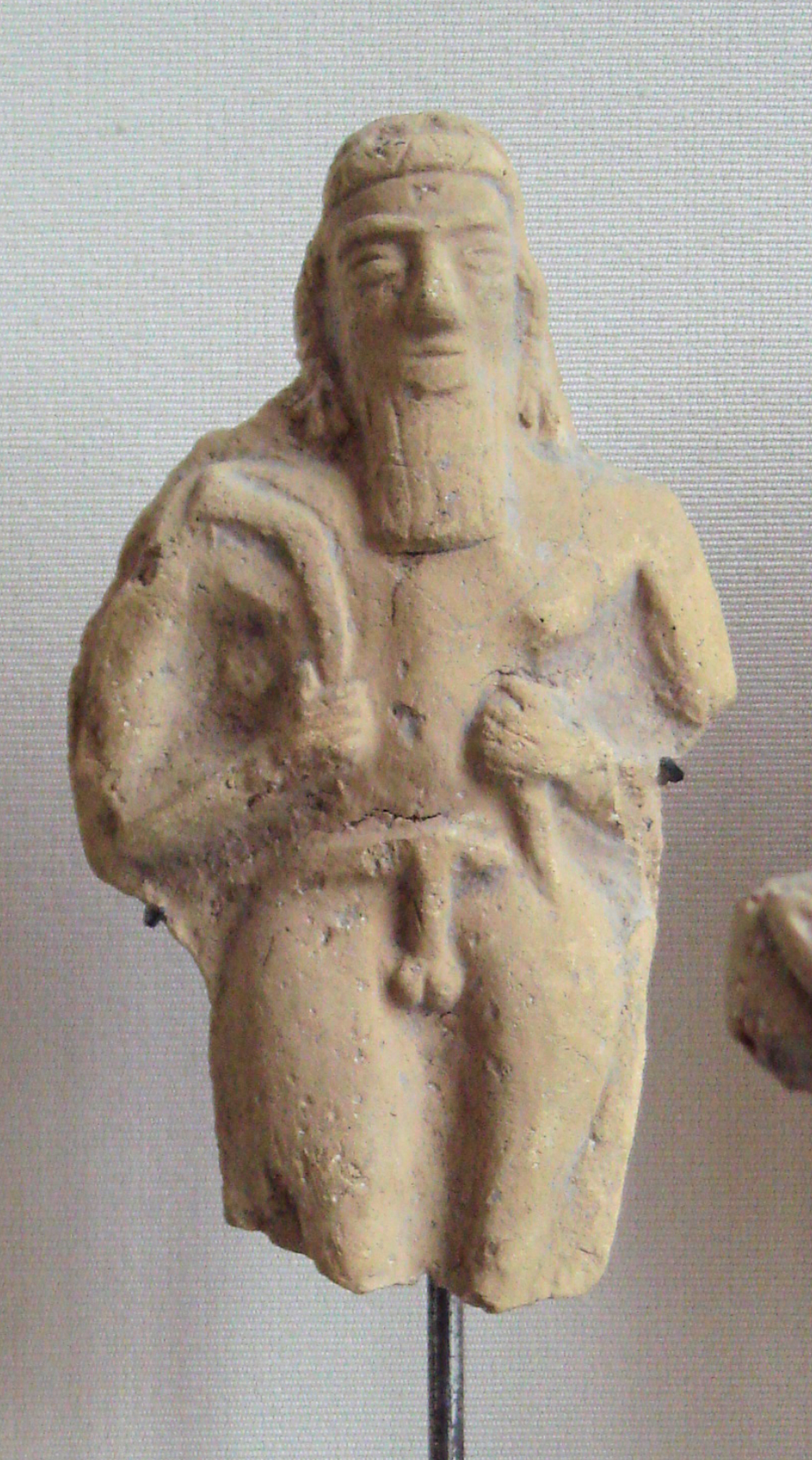|
Ibbi-Sîn
Ibbi-Sin ( sux, , ), son of Shu-Sin, was king of Sumer and Akkad and last king of the Ur III dynasty, and reigned c. 2028–2004 BCE (Middle chronology) or possibly c. 1964–1940 BCE (Short chronology). During his reign, the Sumerian empire was attacked repeatedly by Amorites. As faith in Ibbi-Sin's leadership failed, Elam declared its independence and began to raid as well. Ibbi-Sin ordered fortifications built at the important cities of Ur and Nippur, but these efforts were not enough to stop the raids or keep the empire unified. Cities throughout Ibbi-Sin's empire fell away from a king who could not protect them, notably Isin under the Amorite ruler Ishbi-Erra. Ibbi-Sin was, by the end of his kingship, left with only the city of Ur. In 2004 or 1940 BCE, the Elamites, along with "tribesmen from the region of Shimashki in the Zagros Mountains" sacked Ur and took Ibbi-Sin captive; he was taken to the city of Elam where he was imprisoned and, ... [...More Info...] [...Related Items...] OR: [Wikipedia] [Google] [Baidu] |
King Of Sumer And Akkad
King of Sumer and Akkad ( Sumerian: ''lugal-ki-en-gi-ki-uri'', Akkadian: ''šar māt Šumeri u Akkadi'') was a royal title in Ancient Mesopotamia combining the titles of "King of Akkad", the ruling title held by the monarchs of the Akkadian Empire (2334–2154 BC) with the title of "King of Sumer". The title simultaneously laid a claim on the legacy and glory of the ancient empire that had been founded by Sargon of Akkad (r. 2334–2279 BC) and expressed a claim to rule the entirety of lower Mesopotamia (composed of the regions of Sumer in the south and Akkad in the north). Despite both of the titles "King of Sumer" and "King of Akkad" having been used by the Akkadian kings, the title was not introduced in its combined form until the reign of the Neo-Sumerian king Ur-Nammu ( 2112–2095 BC), who created it in an effort to unify the southern and northern parts of lower Mesopotamia under his rule. The older Akkadian kings themselves might have been against linking Sumer and Akk ... [...More Info...] [...Related Items...] OR: [Wikipedia] [Google] [Baidu] |
Shimashki
The Shimashki or Simashki dynasty (, ''lugal-ene si-mash-giki'' "Kings of the country of Simashgi"), was an early dynasty of the ancient region of Elam, to the southeast of Babylonia, in approximately 2100-1900 BCE. A list of twelve kings of Shimashki is found in the Elamite king-list of Susa, which also contains a list of kings of Awan dynasty. It is uncertain how historically accurate the list is (and whether it reflects a chronological order), although some of its kings can be corroborated by their appearance in the records of neighboring peoples. The Dynasty corresponds to the middle part of the Old Elamite period (dated c.2700 – c. 1600 BC). It was followed by the Sukkalmah Dynasty. Shimashki was likely near today's Masjed Soleyman. Nature of the "Dynasty" Daryaee suggests that, despite the impression from the king-list that the rulers of Shimashki was a dynasty of sequential rulers, it is perhaps better to think of Shimashki as an alliance of various peoples "rather t ... [...More Info...] [...Related Items...] OR: [Wikipedia] [Google] [Baidu] |
Pearson Education
Pearson Education is a British-owned education publishing and assessment service to schools and corporations, as well for students directly. Pearson owns educational media brands including Addison–Wesley, Peachpit, Prentice Hall, eCollege, Longman, Scott Foresman, and others. Pearson is part of Pearson plc, which formerly owned the ''Financial Times''. It claims to have been formed in 1840, with the current incarnation of the company created when Pearson plc purchased the education division of Simon & Schuster (including Prentice Hall and Allyn & Bacon) from Viacom and merged it with its own education division, Addison-Wesley Longman, to form Pearson Education. Pearson Education was rebranded to Pearson in 2011 and split into an International and a North American division. Although Pearson generates approximately 60 percent of its sales in North America, it operates in more than 70 countries. Pearson International is headquartered in London, and maintains offices acros ... [...More Info...] [...Related Items...] OR: [Wikipedia] [Google] [Baidu] |
Dilmun
Dilmun, or Telmun, (Sumerian: , later 𒉌𒌇(𒆠), ni.tukki = DILMUNki; ar, دلمون) was an ancient East Semitic-speaking civilization in Eastern Arabia mentioned from the 3rd millennium BC onwards. Based on contextual evidence, it was located in the Persian Gulf, on a trade route between Mesopotamia and the Indus Valley civilisation, close to the sea and to artesian springs. Dilmun encompassed Bahrain, Kuwait,Archived aGhostarchiveand thWayback Machine and eastern Saudi Arabia. This area is certainly what is meant by references to "Dilmun" among the lands conquered by King Sargon II and his descendants. The great commercial and trading connections between Mesopotamia and Dilmun were strong and profound to the point where Dilmun was a central figure to the Sumerian creation myth.The Arab world: an illustrated history p.4 Dilmun was described in the saga of Enki and Ninhursag as pre-existing in paradisiacal state, where predators do not kill, pain and diseases are abs ... [...More Info...] [...Related Items...] OR: [Wikipedia] [Google] [Baidu] |
Amorites
The Amorites (; sux, 𒈥𒌅, MAR.TU; Akkadian: 𒀀𒈬𒊒𒌝 or 𒋾𒀉𒉡𒌝/𒊎 ; he, אֱמוֹרִי, 'Ĕmōrī; grc, Ἀμορραῖοι) were an ancient Northwest Semitic-speaking people from the Levant who also occupied large parts of southern Mesopotamia from the 21st century BC to the end of the 17th century BC, where they established several prominent city-states in existing locations, such as Isin, Larsa and later notably Babylon, which was raised from a small town to an independent state and a major city. The term in Akkadian and Sumerian texts refers to the Amorites, their principal deity and an Amorite kingdom. The Amorites are also mentioned in the Bible as inhabitants of Canaan both before and after the conquest of the land under Joshua. Origin In the earliest Sumerian sources concerning the Amorites, beginning about 2400 BC, the land of the Amorites ("the ''Mar.tu'' land") is associated not with Mesopotamia but with the lands to the west of ... [...More Info...] [...Related Items...] OR: [Wikipedia] [Google] [Baidu] |
Awan (ancient City)
Awan ( Sumerian cuneiform: ''a-wa-anki'', "Country of Awan") was an ancient city-state or region of Elam in the western area of modern-day Iran. It often appears together with the cities of Susa and Anshan in the early history of Mesopotamia, having many conflictual interactions with Sumer. The city of Awan still has not been located archaeologically. A dynasty of Elamite rulers was named after the city, the Awan Dynasty. It was founded by a ruler named Peli, and is therefore sometimes called "the dynasty of Peli". According to the Sumerian King List, Awan put an end to the First Dynasty of Ur circa 2450 BCE, and three kings of Awan then ruled over the southern regions of Sumer. Circa 2300-2200 BCE, the Akkadian Empire claimed numerous victories over Awan, under its rulers Sargon of Akkad and Rimush. Naram-Sin however signed an alliance with Khita, the 9th king of Awan. Awan wrestled independence from the Akkadians during the reign of Shar-Kali-Sharri. But some time later, ... [...More Info...] [...Related Items...] OR: [Wikipedia] [Google] [Baidu] |
Adamdun
Shushtar ( fa, شوشتر; also Romanized as Shūshtar and Shūstar and Shooshtar) is a city and capital of Shushtar County, Khuzestan Province, Iran. Shushtar is an ancient fortress city, approximately from Ahvaz, the centre of the province. Much of its past agricultural productivity derives from the irrigation system which centered on the Band-e Kaisar, the first dam bridge in Iran. The whole water system in Shushtar consists of 13 sites called Shushtar Historical Hydraulic System which is registered as a Unesco World Heritage. History In the Elamite times Shushtar was known as ''Adamdun''. In the Achaemenian times its name was ''Šurkutir''. According to tradition, Shushtar was founded by the legendary king Hushang after he built Susa (aka Shush), and the name "Shushtar" was a comparative form meaning "more beautiful than Shush". Josef Marquart also interpreted the name Shushtar as being derived from Shush, but with a slightly different meaning, with the suffix "-tar" ... [...More Info...] [...Related Items...] OR: [Wikipedia] [Google] [Baidu] |
Susa
Susa ( ; Middle elx, 𒀸𒋗𒊺𒂗, translit=Šušen; Middle and Neo- elx, 𒋢𒋢𒌦, translit=Šušun; Neo-Elamite and Achaemenid elx, 𒀸𒋗𒐼𒀭, translit=Šušán; Achaemenid elx, 𒀸𒋗𒐼, translit=Šušá; fa, شوش ; he, שׁוּשָׁן ; grc-gre, Σοῦσα ; syr, ܫܘܫ ; pal, 𐭮𐭥𐭱𐭩 or ; peo, 𐏂𐎢𐏁𐎠 ) was an ancient city in the lower Zagros Mountains about east of the Tigris, between the Karkheh and Dez Rivers in Iran. One of the most important cities of the Ancient Near East, Susa served as the capital of Elam and the Achaemenid Empire, and remained a strategic centre during the Parthian and Sasanian periods. The site currently consists of three archaeological mounds, covering an area of around one square kilometre. The modern Iranian town of Shush is located on the site of ancient Susa. Shush is identified as Shushan, mentioned in the Book of Esther and other Biblical books. Name The English name is der ... [...More Info...] [...Related Items...] OR: [Wikipedia] [Google] [Baidu] |
Anšan
Anshan (Elamite cuneiform: ; sux, , ) modern Tall-e Malyan ( fa, تل ملیان), was an Elamite and ancient Persian city. It was located in the Zagros Mountains in southwestern Iran, approximately north of Shiraz and west of Persepolis in the Beyza/Ramjerd plain, in the province of Fars. It was one of the earliest urban states to exist, and one of the earliest capitals of Elam from the late 4th millennium BC. It fell under the rule of the Persians in the 7th century BC and then became one of the early capitals of Persia. Most of what is known about Anshan has been discovered through ancient artifacts discovered in archaeological digs at Tall-e Malyan and passages in early Elamite texts. History Anshan is considered to be the origin of one of the world's oldest known civilizations. It was occupied consistently from before 4000 BC to 1000 BC and was politically tied to the Elamites at Susa, as well as the Mesopotamians. Its exact location was unknown to scholars u ... [...More Info...] [...Related Items...] OR: [Wikipedia] [Google] [Baidu] |
Simurrum
The Simurrum Kingdom ( akk, 𒋛𒈬𒌨𒊑𒅎: ''Si-mu-ur-ri-im'') was an important city state of the Mesopotamian area from around 2000 BCE to 1500 BCE, during the period of the Akkadian Empire down to Ur III. The Simurrum Kingdom disappears from records after the Old Babylonian period. It was neighbour and sometimes ally with the Lullubi kingdom. It has been proposed that the city was on the Sirwan River (in Iran) which becomes the Diyala river in Iraq. Kingdom The Simurrum Kingdom seems to have been part of a belt of Hurrian city states in the northeastern portion of Mesopotamian area. They were often in conflict with the rulers of Ur III. Several Kings ( 𒈗, pronounced ''Šàr'', "''Shar''", in Akkadian) of Simurrum are known, such as Iddin-Sin and his son Zabazuna. Various inscriptions suggest that they were contemporary with king Ishbi-Erra (1953—c.1920 BCE). Another king, mentioned in The Great Revolt against Narām-Sîn, was mPu-ut-ti-ma-da-al. Conflicts Sev ... [...More Info...] [...Related Items...] OR: [Wikipedia] [Google] [Baidu] |
Shimashki Dynasty
The Shimashki or Simashki dynasty (, ''lugal-ene si-mash-giki'' "Kings of the country of Simashgi"), was an early dynasty of the ancient region of Elam, to the southeast of Babylonia, in approximately 2100-1900 BCE. A list of twelve kings of Shimashki is found in the Elamite king-list of Susa, which also contains a list of kings of Awan dynasty. It is uncertain how historically accurate the list is (and whether it reflects a chronological order), although some of its kings can be corroborated by their appearance in the records of neighboring peoples. The Dynasty corresponds to the middle part of the Old Elamite period (dated c.2700 – c. 1600 BC). It was followed by the Sukkalmah Dynasty. Shimashki was likely near today's Masjed Soleyman. Nature of the "Dynasty" Daryaee suggests that, despite the impression from the king-list that the rulers of Shimashki was a dynasty of sequential rulers, it is perhaps better to think of Shimashki as an alliance of various peoples "rather tha ... [...More Info...] [...Related Items...] OR: [Wikipedia] [Google] [Baidu] |
Lament For Sumer And Ur
The lament for Sumer and Urim or the lament for Sumer and Ur is a poem and one of five known Mesopotamian "city laments"—dirges for ruined cities in the voice of the city's tutelary goddess. The other city laments are: *The Lament for Ur *The Lament for Nippur *The Lament for Eridu *The Lament for Uruk In 2004 BCE, during the last year of King Ibbi-Sin's reign, Ur fell to an army from the east. The Sumerians decided that such a catastrophic event could only be explained through divine intervention and wrote in the lament that the gods, "An, Enlil, Enki and Ninmah decided r'sfate" The literary works of the Sumerians were widely translated (e.g., by the Hittites, Hurrians and Canaanites). Sumeria historian Samuel Noah Kramer wrote that later Greek as well as Hebrew texts "were profoundly influenced by them." Contemporary scholars have drawn parallels between the lament and passages from the bible (e.g., "the Lord departed from his temple and stood on the mountain east of ... [...More Info...] [...Related Items...] OR: [Wikipedia] [Google] [Baidu] |


.jpg)



.jpg)
